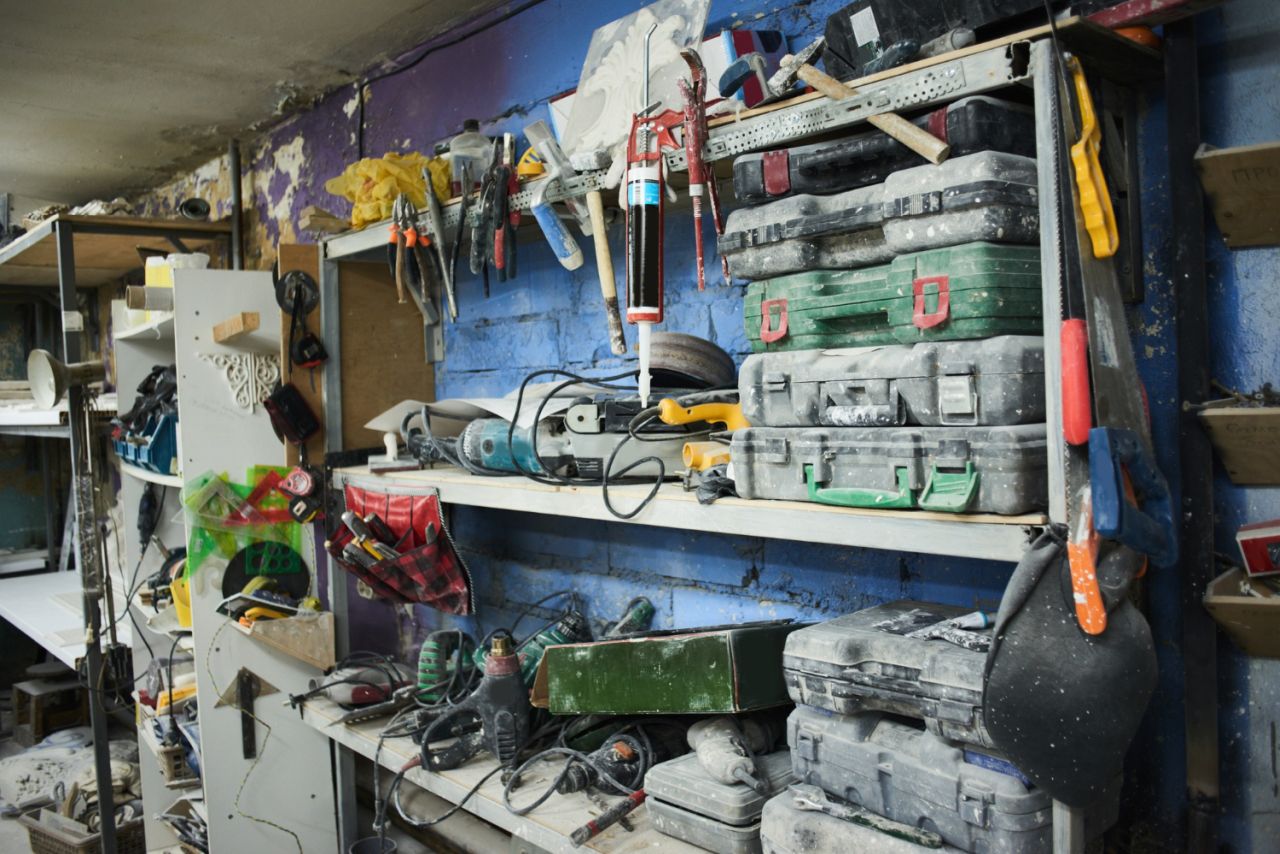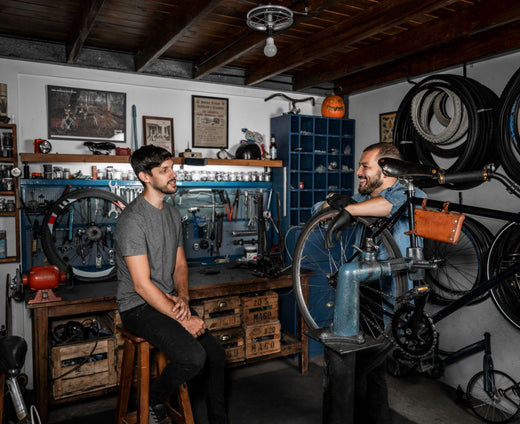Need to find the most effective method to keep your garage cool during the hot summer months?
Garages without windows are even more difficult to cool and keep at a comfortable temperature.
These are just some of the concerns plaguing people who live in warm climates but have a garage without any windows.
Whether you use your garage as a weekend workshop for occasional DIY projects or as a dedicated workspace, you want to feel relaxed and comfortable while you work.
We'll lay out all the options for you to consider, but we have a slight preference for smart cooling technology.
Envision being able to precool the garage 15 minutes before you arrive on a hot summer day by controlling the mini-split from anywhere using your smartphone, or turning on the freeze protection mode when you are away during the snowy winter.
It's impossible to dispute how pleasant and practical it is.
Why Do Garages Get So Hot in the Summer?
During the hot and humid summers that can occur anywhere, the garage can quickly become unbearable to spend time in.
Keeping a garage cool in Oregon can be challenging.
Two major factors contribute to the sauna-like atmosphere of a garage during the warmer months. The first is an inadequate ventilation system, and the second is poor insulation.
However, the issue may also be caused by other elements.
Your garage could be retaining more heat if it is crammed with items, has a concrete floor, or is home to a number of vehicles and other heat-generating machines.
Here are some of the most common summertime garage heat sources.
Lack of Insulation
Many garages have inadequate or no insulation, which is a major cause of the extreme heat that can be found there.
It's impossible to keep the garage at a comfortable temperature without insulation, as warm air will leak in as the cold air escapes.
Costing you more money in your monthly energy bill and making your garage an unpleasant place to spend time.
By preventing heat from penetrating the space and reducing the workload on your HVAC system, garage insulation can help save money.
In addition to better temperature control, insulating your garage door can make opening and closing it more peaceful and provide additional security for your belongings.
It is common for garages to have draughts and openings around the doors, allowing warm air to seep in.
These crevices allow air to seep into the garage, bringing in the ambient air temperature and humidity.
These cracks in the garage door, if left unrepaired, can let in water, animals, and wind, all of which can damage or destroy anything stored inside.
Lack of Ventilation
Many garages don't have windows, contributing to the problem of stale air. If there isn't any ventilation, the garage will quickly become uncomfortable.
A gentle breeze can help bring the temperature down, making the room more bearable.
Ventilation can be improved by installing a turbine or other mechanical system to extract the hot air.
Location and Color
Your garage's location is important. In the hottest part of the day, the sun will shine directly on a south or west-facing garage, making the space even hotter.
If your garage is unable to dissipate this heat, the temperature will continue to rise throughout the day.
The colour of a garage can also affect the temperature inside; darker garages tend to get hotter in the summer because they absorb more sunlight. Using paint in lighter tones can help deflect sunlight and keep your garage cooler.
Heat-Generating Objects
Last but not least, if you park your car inside the garage soon after driving, you may find that the temperature inside has risen.
When your car is on and the engine is hot, it gives off heat and warms the area around it.
This has the potential to quickly alter the pleasant atmosphere of a garage into one that is unsettling.
It's important to remember that any appliance you use in the garage, whether it runs on electricity or gas, will also generate heat.
Tools, washers, dryers, and other machines that generate heat while in use can make your garage uncomfortable.
Having a lot of stuff in your garage will also make it hotter inside. The garage is too warm because of the accumulated junk that has blocked the vents.
Imagine turning that cluttered, dark space into a bright, elegant area of your home. With GarageSmart, it’s easier than you think. Our team will help you create the perfect garage renovation for your needs and budget. You won’t regret choosing us as your partner in this project!
How Much Cool Air Do You Need?
Think about how often you'll be in the garage and how cold you'll want it to be before making a hasty purchase of an air conditioner.
You may only need a temporary or portable system to make it bearable on occasion if you only use your garage for deep storage and rarely venture out there, or if your garage is your only point of entry and exit each day.
However, if you spend a lot of time in your two- or three-car garage working on a hobby or project, or if you grow your own vegetables, you may want to consider a more permanent solution to the problem of hot air.
An even more robust garage air conditioning system is warranted if you use the space to store items that are especially vulnerable to changes in temperature and/or humidity.
If you're looking for things to outfit your entire garage, GarageSmart® got you covered. We can turn your cluttered garage into a clean, crisp, highly functional area for your home.
How to make your garage cooler
There are a number of measures you can take before your garage even gets warm to help mitigate the problem.
Let's check out some ways to keep your garage cooler.
Use powertools outside of your garage
When being used, power tools produce heat.
The more you use them, the hotter the air in your garage will become. If it's not too hot outside, open the garage door and finish your work there.
The tools should be allowed to cool down outside the garage before being brought back inside.
Battery chargers, like most electronic devices, give off heat when in use.
Let your car cool off before pulling it into the garage
After you've driven for a while, your car will have a lot of excess heat.
A large amount of heat energy can be stored and radiated by the engine block and other metal components.
Even after the engine is turned off, they will continue to radiate heat for about an hour.
Don't park your car in the garage until it has cooled down if you want to keep the temperature down there.
Open the garage door and use a garage fan
Having the garage door open can be useful if you want to do some exercise or work on a project there.
Open the door to your garage if the weather is sunny and hot, allowing you to enjoy the cool shade inside. If it's too hot in here, turn on the fans.
Use your garage in the morning and evening

Mornings and evenings, when the sun isn't at its zenith, are more bearable for outdoor activities.
Mornings and evenings in your garage will be more bearable.
It may be more comfortable to work out or complete a home improvement project in the garage at these times.
Keeping the garage at a comfortable temperature is facilitated by this.
Reduce clutter in your garage
Cluttering up your garage with unnecessary items will prevent fresh air from circulating in there.
The decreased airflow will contribute to the rising temperature inside your garage.
That means your air conditioner or fan won't be as effective.
If you want to save money on cooling costs, keep your garage as open as possible.
Replace incandescent bulbs with LEDs
LED bulbs generate significantly less heat than incandescent bulbs. Additionally, they have a notably lower electrical footprint.
Put in LED bulbs for the garage's illumination instead. Warning: garage door openers may not function properly if LED lights are in use.
The use of LEDs is an option even if your garage door light already makes use of incandescent bulbs.
Garage door openers can function normally when using LED bulbs designed for that purpose.
Insulate your garage walls and garage door
Put up some insulation in the garage first, and then think about getting an air conditioner.
When you insulate the walls and door of your garage, the cool air will be more likely to remain where it belongs.
Put up drywall or other interior finishing after installing fibreglass batt insulation.
This is a much more aesthetically pleasing solution than leaving the fibreglass insulation between the studs exposed once the garage is finished.
In addition to the insulation of the walls, a garage door must also be insulated. A garage door insulation kit is a viable option.
Each door panel in this type of door is outfitted with radiant barrier, a reflective material.
Apply reflective window film. A properly insulated door can be built in a weekend and will greatly improve the liveability of your garage.
Request a quotation on our website today!
When insulating a garage, don't overlook the attic. For more information on how to properly insulate a garage ceiling, read the article we've provided for you.
First, you should caulk all the cracks around the windows and doors. Make sure the garage door gasket is properly sealing the door.
Does it have large gaps where light can shine through or does it seal against the garage floor?
Improve your garage ventilation
Keeping the garage ventilated will keep the temperature down rather than closing in the heat.
To get rid of the stifling heat and humidity in your garage, you'll need ventilation fans.
If your garage is stuffy, try installing a ceiling fan to stir things up. Having an exhaust fan installed can assist in removing the hot air from your garage.
Make sure there are working vents in the attic above the garage. Don't let the ceiling of the garage become a thermal oven.
You should put in some attic vents if you don't already have them. You can also use an attic fan to assist in the removal of hot air from your garage.
Use lighter colors for garage doors and roofing
It will be cooler inside your garage if you paint it a lighter colour. To make the garage more welcoming, simply repaint the door a lighter colour.
If your garage is always too hot, maybe you should replace the roof and siding with cooler ones.
Plant trees to shade your garage
If you want to prevent your garage from getting too hot in the sun, planting a large tree in the shade of your garage is a great idea.
Trees planted on the south side of a garage can provide welcome shade on hot summer days.
Take a look at this article on the quickest maturing shade trees if you want some advice on what kind of trees would be best for providing shade.
Use a dehumidifier in your garage
A dehumidifier can be useful for lowering the garage's temperature if you live in a particularly humid region.
Installing a dehumidifier will remove excess moisture from the air, making the garage feel more comfortable to spend time in.
You'll either need a place to put the water's drain or to regularly empty the water from the collection bucket.
DIY Swamp cooler with a fan and bucket of ice
If you live in a very dry, hot area, on the other hand, you can construct a swamp cooler to keep your garage cool.
A swamp cooler is an evaporative cooler made from a bucket of cold water (the colder, the better), which is cooled by a fan blowing across the top of the bucket.
As air flows over the bucket, it will be cooled and humidified.
Ice added to the water will increase its efficiency.
Avoid making the ice with a garage freezer.
Your homemade swamp cooler won't be able to handle the amount of heat produced by your running freezer.
Install air conditioning
Having a consistently comfortable temperature in your garage requires air conditioning.
Without proper insulation, air conditioning will be ineffective.
Without proper insulation, all that cold air you generate will simply escape the building.
Take care of ventilation and insulation in the garage first.
If there is ducting near a garage wall, you may be able to connect your garage air conditioner to your home's system.
This is not true for the vast majority of homes.
You can forget about using your central HVAC system in a detached garage.
It might not be a good idea to use your HVAC system for something else, even if you have the option to do so.
Return ducting is a standard component of air conditioning and heating systems.
Your garage may be a source of car exhaust and other fumes that you don't want to be distributed throughout your home.
A window air conditioner, or a portable air conditioner with a window for exhaust, is one option for cooling a room with windows.
A window air conditioner has never worked for me.
After only one or two warm summers, they all stopped working or leaked their refrigerant.
A ductless AC unit is the most effective method for cooling your garage.
This can be used without installing any ducting or replacing any windows.
They use an indoor air handler and an external condenser.
If you need to cool a particularly large garage or specific areas of your home, you can instal multiple indoor air handlers.
Also, you can use it to warm up your garage during the winter. To learn more about how to maintain a warmer garage, read this article.
How much cooling power do I need to keep my garage cool?
You can use the 30 BTU per square foot rule to figure out how big of an air conditioner you need for your garage.
The minimum required BTUs to heat a garage is 30 per square foot. On a day when the temperature is 100 degrees Fahrenheit, you will need 12000 BTUs to cool a garage that is 400 square feet in size (the average size for a 2-car garage).
To determine the optimal size of your home or garage air conditioner, check out this handy calculator.
What temperature should I keep my garage at?
The ideal temperature for a garage is just above the dew point and below the comfort zone.
As the air cools below its dew point, condensation forms because of the high humidity. Inland areas have a dew point around 40F, while the humid coast has a dew point around 65F.
Don't let the temperature in your garage drop below that.
The ideal conditions for storing a car are temperatures around 70 degrees Fahrenheit with humidity around 40 to 50 percent.
All the aforementioned options present distinct paths to the same goal, albeit through very different means.
How and how often you plan to use your garage should be top priorities.
The next step is to allocate funds for the project, and then to implement any of the aforementioned measures to reduce the temperature in your garage.






